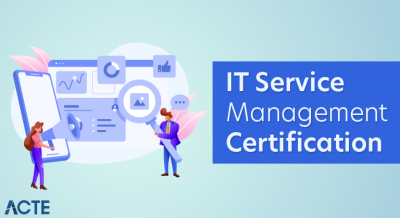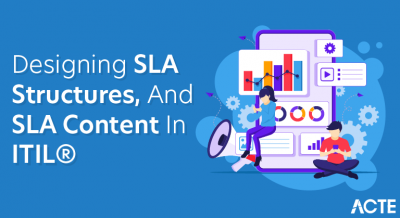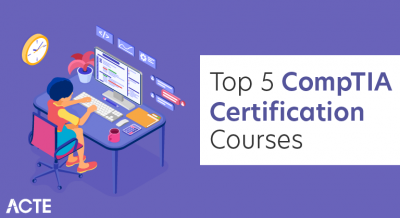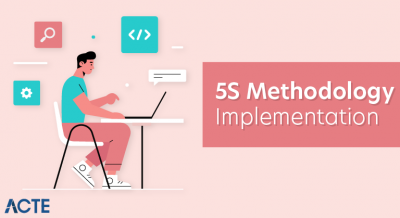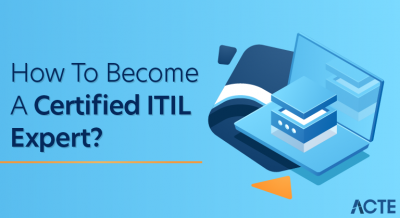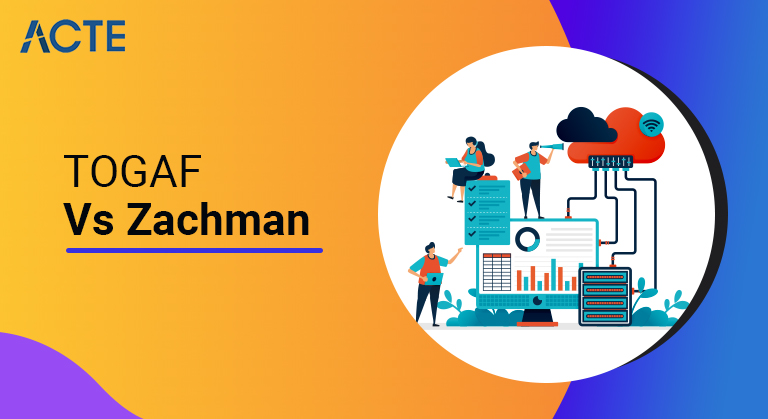
The Zachman Framework is not a methodology but rather a template describing how different abstract ideas are viewed from different perspectives. Zachman is focused on identifying the different viewpoints that might be relevant for different purposes while TOGAF is focused on the process of developing architectures.
- Introduction to TOGAF And Zachman
- TOGAF vs Zachman
- What is TOGAF Framework? Explain its Architecture & Unique Features?
- How It represents both the processes and functions of organisations??
- Choosing TOGAF or Zachman
- TOGAF vs. Zachman comparison
- The Best Enterprise Framework – TOGAF Vs. Zachman
- TOGAF vs. Zachman – Key Differences Comparison
- Strength and weakness of TOGAF And Zachman
- Conclusion
- Technology
- Procedures
- Information assets
- Using Semitic deity solves 2 vital problems facing technology-driven business organisations:
- Developing an entire understanding between a lot of dependent parts of business plans permits organisations to scale back the complexities of structures.
- Helping to determine a well-organised and privy decision-making method aligns technology with business objectives.
Introduction to TOGAF And Zachman:
Zachman and TOGAF are 2 of the foremost standard agencies that assist you run Enterprise design. In this article, we are going to discuss TOGAF and Zachman. We’ll additionally embody tips about a way to select and extra resources.
Enterprise design (EA) may be a structure that integrates the complete business set up of a company, that includes:
The structure of your business offers a spread of views from a technical and business perspective, permitting you to require an instantaneous approach to managing those plans.
In different words, your business design defines choice criteria which will be applied to business IT and business plans and may comprises 3 key components: framework, methodology, and tools.
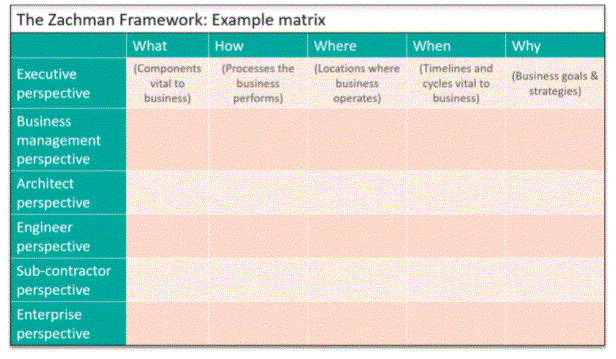
- Specifies the submission
- It divides the various parts of the business system into a matrix form
- It associates them with the decisions of the business environment-I
- Using a matrix, the lines separate the views of different players in the organisation based on the decision point specified in the columns.
- The column headings describe What, How, Where, When and Why. With this information, each cell matrix defines the sub-system relationships of each business and the appropriate organisational characteristics.
TOGAF vs Zachman:
TOGAF: Open Group Architecture Framework:
TOGAF is a standard de facto industry framework, providing an operational framework for Enterprise Architecture design, planning, implementation, and governance. It provides a consistent view of architectural elements that are not well understood by all stakeholders in the organisation. The open framework environment allows organisations to secure vendor locks with EA patent solutions. This means that you can measure and adapt to situations without incurring significant costs, security, and technical integration issues.
The TOGAF framework provides a series of interventions within the architectural process, known as the Architectural Development Plan (ADM). The ADM process is not a fixed template but a standard and flexible approach that can be used in a variety of organisational contexts to improve business structure.
Zachman Enterprise Architecture:
John Zachman was an IT pioneer who understood the challenges facing IT businesses. To address these issues, he launched the first business venture in 1987 — the Zachman Framework.
The Zachman Framework provides a model-based approach to:
While the framework does not provide a guide to use or method of operation, it does provide a descriptive focus on artefacts by providing ideas across the overall structure of the business.
- TOGAF also provides a good idea that can help while implementing major changes. Additionally, it also develops programs in general.
- With TOGAF, the Open Group has come up with a short framework that also needs to raise awareness about relevant communication.
- TOGAF empowers business premises to operate more efficiently, such as:.
- Repetitive process representation that ensures advanced processes.
- A completely reusable set of existing assets in buildings.
- Different tools and methods for organising, implementing, developing, and maintaining business structure.
- The Zachman Framework is not a standard method; rather, it is a metaphor for how different ideas are manifested by equally different ideas.
- The Zachman Framework is a two-dimensional matrix consisting of six columns and rows. Here the lines mean the idea, and the columns represent important questions.
- The matrix breaks the cells that continue to define business presentations in a very organised and detailed way. Frame, once normal, rows and columns of the matrix do not remove. Moreover, to make the matrix perfect.
- No matter what happens, Zachman is flexible enough to work on projects related to any scam. It is important to focus on every single thing and its purpose. Zachman prides himself on building relationships between different cells. The plan is not just about buildings. Instead, it helps to organise and manage one just like any other tool.
What is TOGAF Framework? Explain its Architecture & Unique Features?
The Open Group is said to have introduced TOGAF. The TOGAF framework and approach helps leading organisations around the world improve their efficiency. A framework is a general framework that ensures strong mechanisms, standards, and rights of communication between business building professionals. TOGAF represents the complete formation of organisations and the relationships of stakeholders and their activities.
What is Zachman Enterprise Architecture? Describe its Architecture and Unique Features (elements too)?
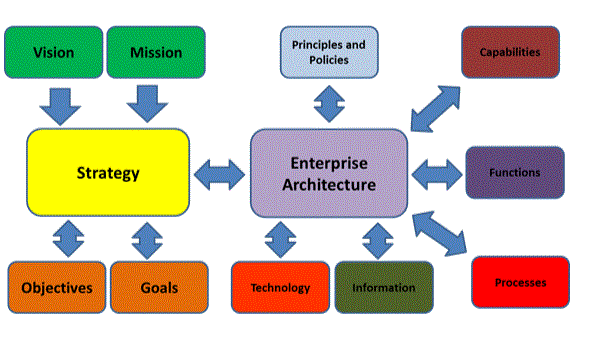
How It represents both the processes and functions of organisations?
Where? – Is all about logistics, geographical areas, and communications.
What? – Business events and cycles that start business activities.
WHO? – Represents communication with organisational units between both technology and people.
Why? – This translates into general strategies, business objectives in specific ways.
Choosing TOGAF or Zachman:
Which business architecture you choose depends on your approach. The TOGAF framework provides a systematic way of defining the process of creating or developing an Enterprise Architecture. With its ADM, the framework provides a decision-making process to produce the model you want.
The Zachman Framework is part of an ontology — a systematic series of lectures that explain how art objects can be subdivided, and thus created, used, and transformed. Unlike TOGAF, Zachman uses a variety of business ideas to compile, define, and organise information pertaining to small business plan sets.
Your organisation may choose to use one — or both. Together, the structures can complement each other, TOGAF outlines a detailed process for creating Enterprise Architecture, and Zachman separates art objects.
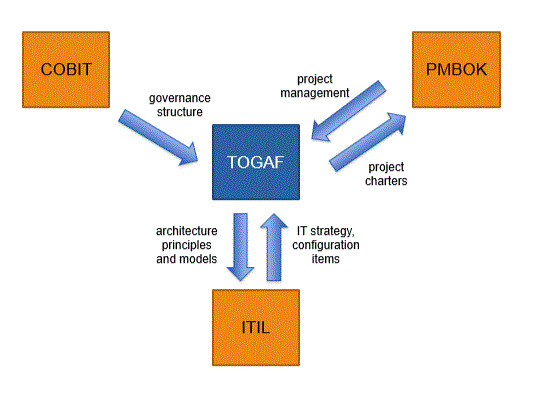
TOGAF vs. Zachman comparison:
TOGAF Framework
‘Enterprise architecture’ represents organisational structure and the relationship between activities and internal stakeholders. It offers a level of insight that can be very helpful when planning major changes, as well as general development plans. Developing a short business architecture requires knowing the right features and communication. Considering how different businesses, departments, and teams can be, business designers also need a certain level of flexibility, and that is where TOGAF comes into play.
The TOGAF approach sets out the procedures for designing, planning, implementing, and managing business premises. It is open and flexible, helping businesses to avoid being trapped between EA advisers or certain vendors. At the same time, it also helps to create art objects that can be scaled and modified over time, eliminating the need to worry about elements such as technology integration, cost overruns, security, and so on. The key to the success of TOGAF ‘Structural Development Approach (ADM)’, an unlimited guide to EA development. It can be modified and rearranged according to user requirements. ADM also acts as part of an ongoing dialogue cycle, making the process of integrating new things more natural.
The ADM piece of TOGAF provides a process for implementing decisions and producing the required models. These steps are:
The vision of buildings. The first phase describes the scope of the project, identifies the participants, and obtains the necessary approvals. Business policies and drivers are linked. A power test can be done to test an existing Enterprise Architecture.
Business premises. The process used to meet Architecture Vision is described in this section. Detailed business analysis and modelling is done at this stage in collaboration with several stakeholders. The official objectives of the foundation and the intended objectives are also specified.
Information system structure. The same functions as in the previous section are now performed on the data and application structure that supports the Vision Properties. Targeted data design principles and application structures will be specified in this section.
Construction technology. The technical infrastructure required to support the Architectural Vision and in particular, aligned with Business and Information Systems Architecture is specified in this section. Key stakeholders will include the IT department and the officials responsible for technical decision-making and investment authorization.
Opportunities and solutions. As the choice of architectural design is finalised in the previous phases, different conditions of use are considered. Both technical and business aspects are considered in this assessment and the correct trading environment is identified.
Planning a move. This section presents the sequence of the most effective decisions and models of Enterprise Architecture as described in the previous section. The implementation plan is designed based on cost, opportunities and risks. Projects are on the lookout list.
Implementation of rules. In this section, the required details of the properties of the selected projects are specified. Complete oversight of the buildings is provided during this section, which explains the change requests, compliance testing and a description of the building blocks of the solution.
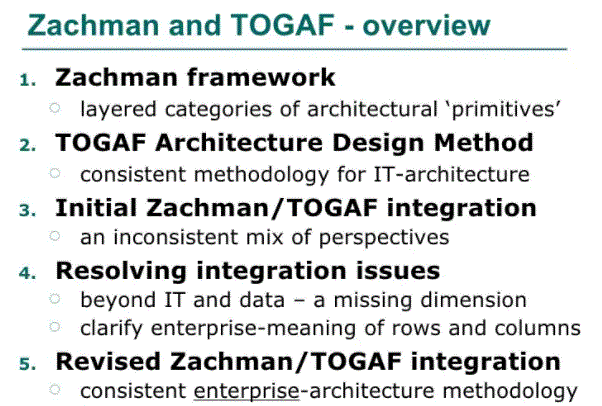
- Any business real estate businesses and organisations that completely choose depends on the path.
- TOGAF is a framework that provides a comprehensive way to define the whole process of developing and creating Enterprise Architecture. ADM empowers the framework by providing procedures for implementing any decision-making processes to produce the required type of business.
- The Zachman Framework, on the other hand, is about ontology. An outline is a set of fully structured discourses that explain how art objects can enter into segregation. Moreover, it creates, changes, and works very well. An important difference between Zachman and TOGAF is that the first uses different perspectives.
- Provides an unprecedented location that describes, organises additional information about subsets about the business system.
- Organisations have the right to choose one. However, there are opportunities for organisations to choose both. If organisations want to get the best out of both of you, you may be happy to know that structures can complement each other. For example, TOGAF describes a comprehensive process for creating Enterprise Architecture; at the same time, Zachman was able to distinguish art objects.
The Best Enterprise Framework – TOGAF Vs. Zachman:
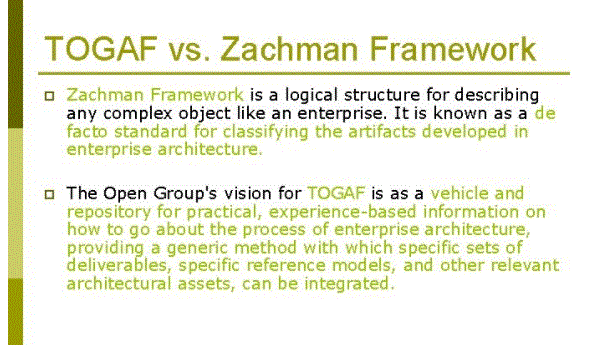
- It is very flexible and very flexible
- It addresses issues by enabling participants to communicate with one voice
- Meditates on meeting company goals and governance
- Utilities to use company software in a highly organised and systematic way
- It offers a much more practical and effective method than Zachman
- The Architecture Development Method is as strong as the core of the world
- It has significant confidence in the market even today
- At times it may seem slow, so users have to officially change the draft
- Origin of a free readable framework from a large community
- It improves communication at the personal level that takes place within the information system
- The framework sets out a number of related tools
- It develops the most advanced methods of producing unique representations of structures
- Zachman also helps the organisation to understand all the reasons for the risks of not creating real estate representation
- Sometimes, Zachman can create a difficult way to write texts
- There are some segments of engineers who do not accept the professional practice offered by Zachman
- Users will not always follow the path to the top. Instead, they can choose to start at any cell, continuing to replicate from that point
- Zachman is still following the general strategy, circling the data
TOGAF vs. Zachman – Key Differences Comparison:
TOGAF:
Zachman:
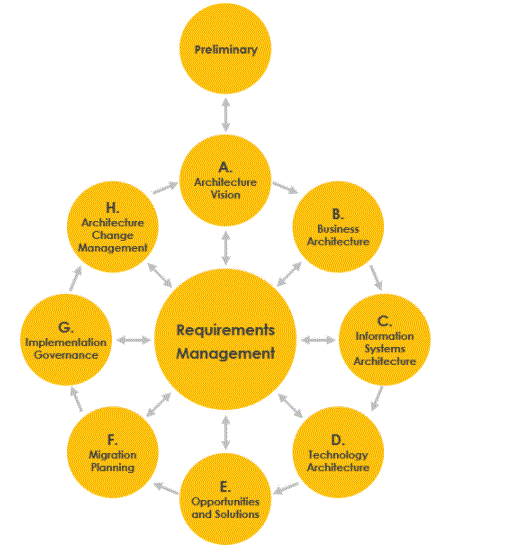
- The framework is acknowledged as an accepted idea of business construction by the info community.
- The Zachman framework defines all the angles a corporation should have. This will be used inside the Enterprise Unified method (EUP).
- The Zachman framework clearly states that there are several stakeholders, like suppliers, business partners, and customers, and not simply architects or developers of the problem. (Wambler, S, 2002).
Strength and weakness of TOGAF And Zachman:
The Zachman framework has many strengths:
Weaknesses of the Zachman Framework:
On the opposite hand, the framework has several weaknesses: The frame consists of thirty six cells wherever every cell will hold over one model so creating the handling method an important load to… show additional content
The framework was 1st introduced in 1984, where it absolutely was renamed “Information Systems design – A Framework” and consists of solely 3 columns; information, operate and network whereas all six lines are unit calculated from the primary time the framework was created by John Zachman. Moreover, John Zachman wasn’t positive of the framework he had created as Enterprise design had not nevertheless emerged (Zachman, J, 2009).
List here may be a broad summary of however TOGAF® will profit organisations.
Ease of use: In line with purpose # one, once enforced, TOGAF® is additionally straightforward to use and comes with complete documentation, which implies that IT organisations and managers can don’t have any downside keeping the IT structure up to plain. additionally, TOGAF® is one in all the few IT frameworks that may be used and maintained by artists of any ability or level of expertise.
Global Standard: As a customary for Enterprise design and therefore the world-renowned framework, TOGAF® provides a method of ordinary design development and general definitions of components and delivery. This implies that TOGAF® is straightforward to transfer and operate between industries and every one business unit \ geographies.
Fact: The TOGAF framework may be a combination of efforts from all TOG’s member organisations (Open Group’s) and provides a well-supported theoretical framework that underpins the advanced method of developing and supporting Enterprise design.
Procedure: The ADM TOGAF® (Structural Development Method; see fig. 1) or “framework framework”, provides the foremost comprehensive field of study development method that’s not too sophisticated, yet.
Flexible: TOGAF® isn’t simply monolithic because it is often utilised in combination and mixed with alternative structures. That is, they are often utilised in whole or part in step with the requirements of the business. It is often utilised in tiny and medium businesses and is well usable altogether applications. All needs are met in an exceedingly systematic manner that ensures satisfactory merchandise.
Conclusion:
When it comes to the choice between Zachman and TOGAF, organisations or businesses must decide whether they intend to split or create a real estate business. Apart from the significant differences, the different approaches of these structures do not contradict or contradict each other. Being very cohesive, they can help departments, teams use both structures and get more collaborative.

